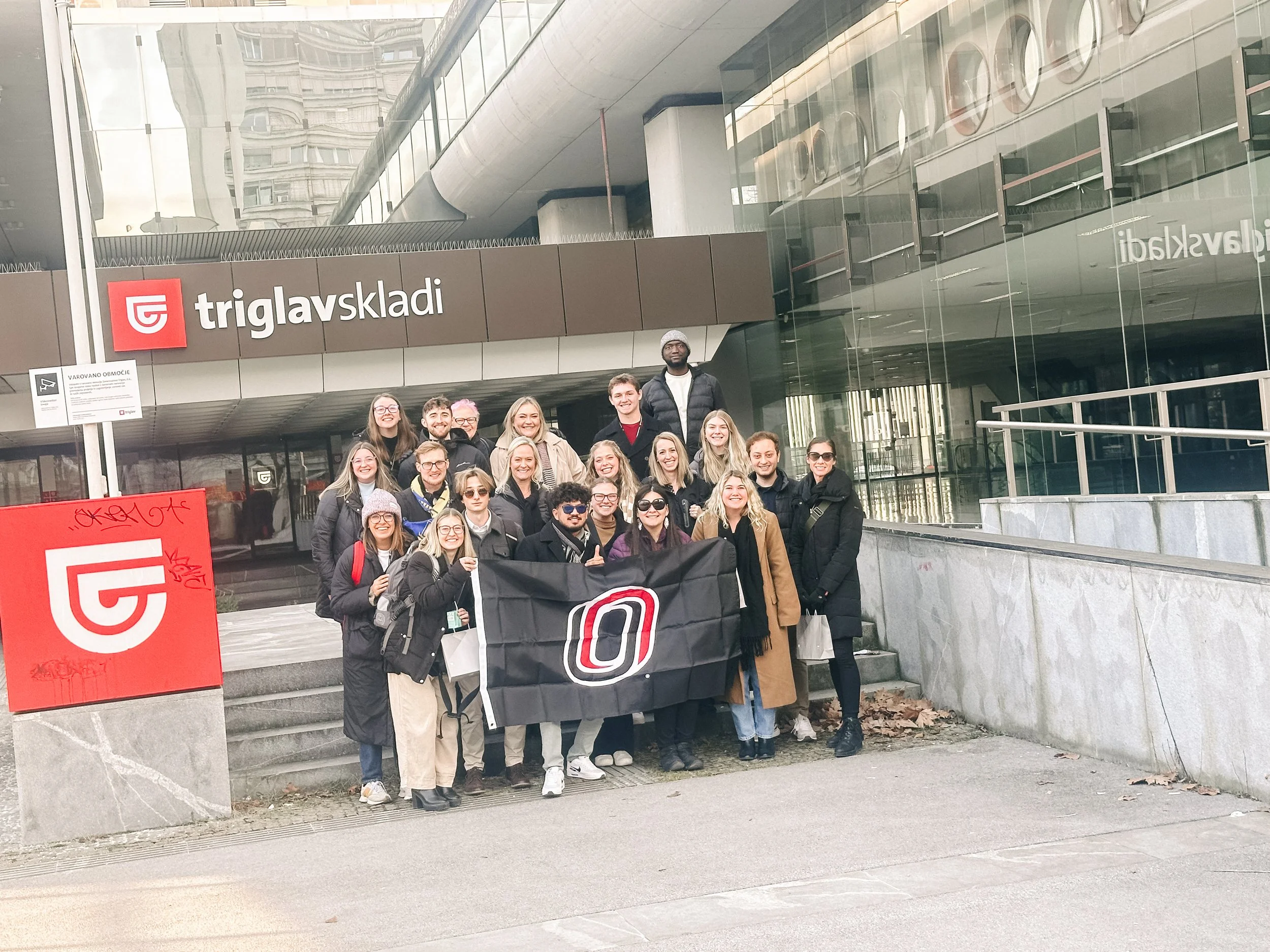What’s Your Problem?
The Takeaway: Take time to define your problem or your ideas may be useless.
You read that correctly.
I said, “what’s your problem?”
When we think of problem solving and creativity, we often think about the “fun bits” – the brainstorming session with our teammates, the colorful Post Its on the wall, or the overly glamourized late nights slouched over a laptop with a coffee in hand when that aha! moment hits us.
But on a recent study abroad trip to Slovenia, on which my colleague and I chaperoned 20 undergraduate and MBA students around the country to lectures and company visits (if you ever want to be smacked in the face with a reminder that you are no longer in your 20s, I highly recommend chaperoning a trip like this…), I was reminded about the importance of this question:
What’s your problem?
During our trip, we visited Triglav, a prominent insurance group in the Slovene region. Talking about car or drivers insurance, the Triglav team told us that most people think about young people or new drivers as the primary cause of accidents and issues on the road. But Triglav wanted to know if this was in fact their problem and if this group were the ones costing them the most money and therefore, the ones most in need of an intervention.
Rather than run with the common assumption, they commissioned a study and looked at their own data on accidents and other costly driving issues.
The Jan 2024 Study Abroad Group visiting Triglav
What did they find?
Turns out, the newbies weren’t their biggest problem. Elderly drivers caused the most issues for Triglav.
As a result, Triglav developed targeted interventions specific to that population including free driving lessons!
What struck me the most about this approach, weren’t the innovative solutions (although they had many!), but the time and effort spent on truly understanding the problem. It was the investment into the problem itself that then prompted the creative ideas that made a big impact for Triglav and drivers – both the elderly needing a refresher and the other drivers on the road who were now made safer.
That’s a great story, but what does the science tell us about problem finding and problem solving?
Let’s have a look!
Research on creativity and innovation repeatedly emphasizes this same fact. The effectiveness of a solution to any problem – creative or mundane – requires a clear understanding of the problem at hand. For example, research on artists and scientists found that time spent identifying and constructing a problem differentiated critically acclaimed artists from those who were considered professionally competent, with the former engaging in this for longer. (Rostan, 1994; Voss, Wolfe, Lawrence, and Engle, 1991). Experimental research conducted in a lab setting shows a similar pattern – participants who were asked to engage in problem identification by restating the problem in multiple ways generated more creative ideas that those who weren’t asked to engage in the same process. (Mumford et al., 1993; Reiter-Palmon et al., 1997)
Imagine if Triglav hadn’t taken the time to define their problem and instead went with the usual hypothesis! They would have invested time, energy, and money into solving the wrong problem and would have found themselves in the same position the next year, and the year after that, and after that….
So the next time you find yourself faced with a problem, ask yourself, do I really understand what the problem is? Or when someone brings a problem to you, ask, is that really our problem? Or maybe you even need to ask, what’s my problem?
And add these steps to your “to do” list:
Carve out time for you and your team to talk about the problem
Collect the relevant data
Unpack the problem entirely
Importantly, do this without jumping to idea generation (aka the “fun bits”). Focus solely on getting to know your problem.
Once you think you know the problem, then grab your post-its, whiteboards, and favorite markers and start generating ideas!!
A word of caution: the idea generation process often refines our problem, meaning this might not be a clean, linear process. Even when we take the utmost care to understand the problem at hand, new or unexpected issues may emerge as you discuss ideas for solving them. That’s ok! Refine your understanding of the problem as you go along and ensure that changes are clearly communicated the team so everyone is working to solve the same problem.
References
Mumford, M. D., Costanza, D. P., Threlfall, K. V., Baughman, W. A., & Reiter-Palmon, R. (1993). Personality variables and problem construction: An exploratory investigation. Creativity Research Journal. 6, 365-424
Rostan, S.M. (1994). Problem finding, problem solving, and cognitive controls: An empirical investigation of critically acclaimed productivity. Creativity Research Journal, 7, 97-110
Voss, J.F., Wolfe, C.R., Lawrence, J.A., & Engle, R.A. (1991). From representation to decision: An analysis of problem solving in international relations. In R.J. Sternberg & P.A. Problem Identification and Construction 18 Frensch (Eds.), Complex problem solving: Principles and mechanisms (pp. 199-158). Hillsdale, NJ: Lawrence Erlbaum Associates, Inc.
Reiter-Palmon, R., Mumford, M.D., O’Connor Boes, J., & Runco, M.A. (1997). Problem construction and creativity: The role of ability, cue consistency, and active processing. Creativity Research Journal, 10, 9-23.

